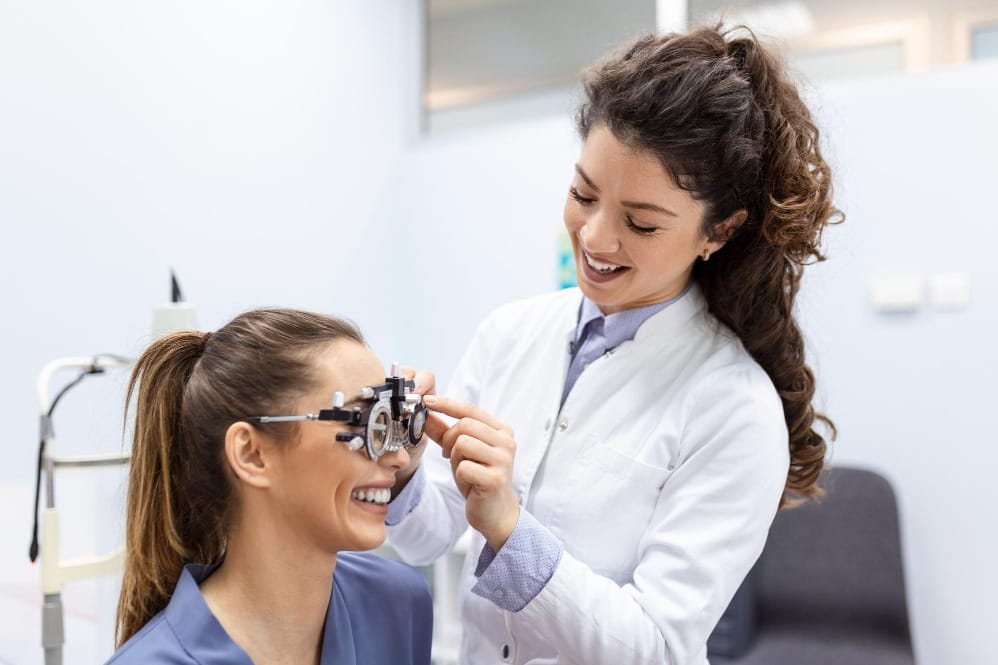Our retinas convert light into images, allowing us to read, drive, and recognize faces. When disease strikes this paper-thin tissue, sight can change quickly. The good news is, over the last decade, retina care has transformed. New medicines, delivery systems, and surgical techniques now help slow disease, prevent complications, and in some cases restore useful vision.
If you live in or around Chandigarh, you’ll find that many of these advances are now part of routine care in India too. If you’re searching online for the best retina specialist in Chandigarh, use this guide to understand today’s options so you can have a clearer conversation at your visit.
Retina care in 2025: What are the Developments?
Modern retina treatment focuses on two goals: keep the retina attached and well-nourished, and keep the macula (the center for sharp vision) clear of fluid and scarring. Therapies now target abnormal blood vessels, chronic inflammation, and degenerative pathways often with fewer injections than before and more tailored plans based on your diagnosis and response. Long-acting drug delivery and gene-based approaches have also moved from theory to clinic for select conditions.
Anti-VEGF
Today’s anti-VEGF medicines often control wet age-related macular degeneration (AMD), diabetic macular edema (DME), and retinal vein occlusion (RVO) with 12–16-week treatment intervals once the eye is stable.
Newer agents were designed to last longer or hit multiple pathways:
Medicines to block both VEGF-A and Ang-2, enabling some patients to maintain vision with personalized intervals as long as 16 weeks after initial loading. Large trials in AMD and DME showed non-inferior vision outcomes with fewer visits for many people.
For RVO-related macular edema, current practice guidelines recommend anti-VEGF as first-line treatment; steroid implants and laser are used in specific scenarios.
Why it matters: fewer injections and fewer clinic days mean better adherence, which directly affects vision over time.
Laser Therapy
Panretinal photocoagulation (PRP) treats ischemic retina in proliferative diabetic retinopathy to reduce vision-threatening bleeding and traction. It remains a cornerstone next to anti-VEGF.
Focal/grid laser is sometimes used for small leaking points, often combined with anti-VEGF in diabetic eye disease. Modern delivery (including micropulse in select cases) aims to limit collateral damage while targeting the problem area.
Steroid Implants
For some diabetic or vein-occlusion patients, steroid implants can cut swelling with only a handful of treatments per year.
The dexamethasone implant offers bursts of anti-inflammatory effects that can improve vision in DME and RVO-related edema. In 3-year trials, more patients on the implant gained meaningful letters of vision vs. sham, though cataract and eye-pressure monitoring are essential.
The fluocinolone acetonide implant (very low-dose, long-acting) can reduce treatment burden in chronic DME, with benefits maintained over years in real-world registries.
Your specialist will consider lens status and glaucoma risk when suggesting steroid options.
Surgery Today
Modern retina surgery often uses 25- or 27-gauge instruments through tiny sclerotomies, leading to less irritation and quicker visual recovery in many cases. Vitrectomy removes blood, membranes, or scar tissue; gas or silicone oil may be used to support healing depending on the problem.
For retinal detachment, surgeons choose among:
- Pneumatic retinopexy (gas bubble + laser/freezing) for select, simpler tears.
- Scleral buckle to physically support the wall of the eye.
- Pars plana vitrectomy to remove traction and reattach the retina.
These approaches are frequently combined and tailored to your eye; prompt treatment is crucial for the best outcome.
Long-Acting Delivery
A surgically placed, refillable reservoir that continuously delivers ranibizumab has been re-introduced with design updates after an earlier recall. Approvals have expanded to include DME and diabetic retinopathy in 2025, and 5-year extension data show maintained vision with twice-yearly refills in many patients. Not everyone is a candidate because it requires a short surgery and carries implant-related risks, but for the right person it can meaningfully cut clinic visits.
Gene and Cell Therapies
CRISPR-based editing for certain inherited conditions, optogenetic approaches to make surviving cells light-sensitive, and retinal progenitor or RPE cell therapies are in human trials. These are promising but still experimental, available only in research settings with careful selection and monitoring.
Which Retina Treatment is “Right”?
The correct treatment option is selected based on your specific need, for example:
- Wet AMD / DME / RVO macular edema: Anti-VEGF first; consider extended-interval regimens once fluid is controlled. Steroid implants are options in select cases (e.g., anti-VEGF sub-responders, pseudophakic eyes).
- Proliferative diabetic retinopathy: Anti-VEGF and/or PRP to stop dangerous new vessel growth; vitrectomy if there’s non-clearing vitreous hemorrhage or traction.
- Geographic atrophy (dry AMD): Complement inhibitors to slow lesion growth and preserve function longer; discuss risks, benefits, and visit frequency.
- Retinal tears/detachment: Immediate laser or freezing for tears; surgical repair for detachments, the choice depends on tear location, lens status, and severity.
- Inherited retinal disease: Genetic testing first; gene therapy is available only for specific mutations (such as RPE65).
Living with Retinal Disease
Control blood sugar, blood pressure, and cholesterol if you have diabetes. Avoid smoking. Keep to scheduled eye exams (especially if you notice sudden flashes, a shower of floaters, or a curtain in vision, which need urgent care). Evidence-based screening and early treatment prevent much of the avoidable vision loss in diabetes.
FAQs
What does retinal detachment surgery cost (INR)?
Quotes vary by city, complexity, and whether gas or silicone oil is used. Public listings and clinic estimates show vitrectomy/scleral buckle packages that commonly fall somewhere between ₹60,000 and ₹1,50,000+ in many Indian metros; complex cases can exceed that. Use this only as a ballpark and request a formal estimate.
Do I need both lasers and injections if I have diabetes?
Often, yes but at different times. Anti-VEGF is first-line for center-involved macular edema; PRP laser reduces risks from proliferative disease. Treatment is sequenced and customized to your exam and OCT findings.
How uncomfortable are eye injections?
Numbing drops and antiseptic are used; most people feel pressure rather than pain and are done in minutes. A day of mild irritation or a painless floater-like “bubble” is common. Report any worsening pain, vision drop, or many new floaters immediately.
Should I consider “refillable eye implants”?
If you need frequent anti-VEGF, a refillable ranibizumab implant may reduce visits to about twice a year after a one-time procedure. So, if you’re a candidate and comfortable with device-specific risks and follow-up. Discuss surgical logistics and safety with your specialist.
Conclusion
Retina care has never been more hopeful. From extended-interval anti-VEGF dosing and complement inhibitors for GA to refillable implants and better surgery, we now have tools that not only protect sight but also reduce treatment burden for many people.
If you’re booking with the best retina specialist in chandigarh, bring this overview and your questions. The right plan blends evidence, your lifestyle, and what your eye shows on exams, so you can keep doing the things that matter most.



